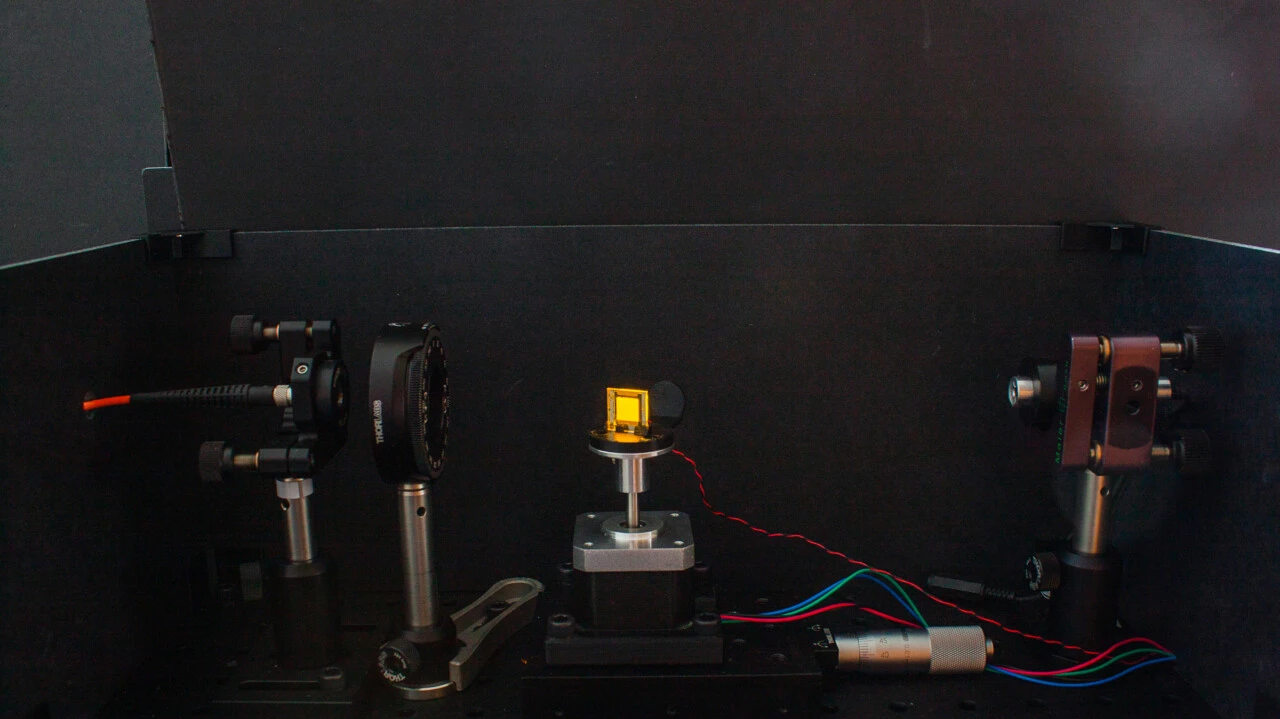Scientists from Umeå University and Uppsala University have formulated a new technique to regulate the light emission of light-emitting electrochemical cells (LECs). Details of the study have been published in Advanced Materials.
 LEC devices are extremely thin, flexible, and lightweight, and can now be easily modified to be more efficient with simple and low-cost modifications of the materials in the active layer. Image Credit: Joan Ràfols-Ribé
LEC devices are extremely thin, flexible, and lightweight, and can now be easily modified to be more efficient with simple and low-cost modifications of the materials in the active layer. Image Credit: Joan Ràfols-Ribé
The LEC light source is very thin, adaptable, light and, at present, can be easily altered to be up to 60% more efficient through simple and low-cost modifications to the materials in the active layer.
We show that you can control the position where light is formed in the active layer through rational changes in material composition.
Joan Ràfols-Ribé, Postdoctoral Fellow, Department of Physics, Umeå University
LECs are luminescent systems that discharge light in reaction to an electrical current. They usually comprise a thin active layer measuring 100 to 500 nm (compared to the diameter of a human approximately 1000 times thinner) of organic semiconductor material packed in between two electrodes, one being reflective and the other being transparent so as to allow the light to enter.
The LECs’ key feature is their capacity to reorganize into a light-emitting form, similar to the form of the light-emitting diodes (LEDs), immediately when a voltage is passed between the two electrodes. The reorganization occurs because of mobile ions, incorporated into the active layer.
Owing to this reorganization, it is feasible for electronic charges to penetrate the active layer from opposite electrodes and move toward each other. Where these charges (of opposite sign) encounter each other, they create light.
The position where this light emission takes place in the active layer, for example in the middle or close to one of the electrodes, is very important for the efficiency and the color of the emitted light. Until now, the LEC community has had very little control of where this light emission takes place and somewhat overlooked its influence.
Joan Ràfols-Ribé, Postdoctoral Fellow, Department of Physics, Umeå University
Currently, scientists from the Umeå University and Uppsala University show that it is feasible to regulate the position of the light emission via rational alterations to the material’s structure in the active layer. The scientists have made three nearly identical LECs in relation to the materials, but with clearly individual efficiencies varying up to 60%.
This has been accomplished via chemical modifications to the so-called ion-transporter molecule, which is the compound that aids the ions to travel within the active layer. These variations alter the ability of the electronic charges to move through the material, which efficiently modifies the place where they meet within the active layer and thus from where the light is produced.
Visualize two trains departing concurrently and toward each other, one leaving from Stockholm and one leaving from Umeå. If the trains maintained the same speed, they would meet in the middle — at a place called Sundsvall. But if we deliberately place a slower locomotive on the train leaving Stockholm, the trains will meet nearer to Stockholm, such as in Gävle.
In the train analogy, it does not matter where the trains meet, but in an LEC it has an enormous effect and what we have succeeded in is gaining control over where the trains (ie where the charges) meet.
Joan Ràfols-Ribé, Postdoctoral Fellow, Department of Physics, Umeå University
The lesson from the research is that it is possible to regulate the position where light is produced in an LEC via rational and cost-effective alterations of the materials in the active layer, leading to a simple path toward better LEC performance.
Journal Reference:
Ràfols-Ribé, J., et al. (2022) Controlling the Emission Zone by Additives for Improved Light-Emitting Electrochemical Cells. Advanced Materials. doi.org/10.1002/adma.202107849.